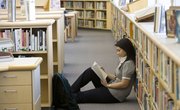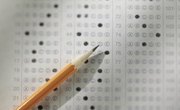What are Lexile Scores?
The Lexile Framework for Reading provides formal testing for students' reading ability. The results of these tests are reported by a number ending with "0" and including an L, for "Lexile," such as 240L or 1170L. Lexile testing does not formally assess giftedness in exam takers. However, the scoring can be used to locate strong readers and help them locate appropriate reading material. Lexile measures and Lexile levels are often used in elementary and middle school settings to help prepare students for high school, and these scores help prepare reading curriculum for students during their school year. These scores are often used for 1st grade through 6th grade students.
Purpose of Lexile Testing
The Lexile Framework for Reading evaluates two components. Its "reader measure" describes a person's level of reading aptitude, whereas the "text measure" determines the difficulty of reading material. Parents and educators can use these measures in tandem to both select reading material appropriate for a student's ability and to gauge a student's gradual progress in reading skill.
Lexile Testing was designed to address the fact that reading ability is specific and unique to each student. If a student has a reading or learning disability, their score may vary from others in their first-grade or other grade level class.
Detecting Giftedness Using Lexile Scores
To begin, Lexile score ranges vary depending on grade level. A proficient first grader would score between 200L and 300L, while an adequate reader in the 12th grade would earn a score in the range of 1060L and 1320L. These ranges are determined by percentile rank: readers proficient for their grade level score better than 53 to 72 percent of other students. There is no specific "gifted" measure for Lexile scoring. However, scoring better than at least 87 percent of others at the same grade level is considered "Advanced."
1321L and above marks an advanced 12th grader, and more than 400L shows that a first grader is similarly outstanding. Those marked as gifted have a higher chance for high school enrollment offers, and gifted students who have high Lexile Reader Measurements are often placed into gifted programs with other gifted children in upper grade levels for resources with learners in their range.
Lexile Test Details
Lexile testing frequently takes place during the reading comprehension section of state educational assessment testing for ELA sections. Not every state's examinations report Lexile scores. Those that do include California, Hawaii, Georgia, Oklahoma and Wyoming. Other standardized tests that include Lexile scoring are the Stanford Achievement Test and the Scholastic Reading Assessment. After testing, a student's score is assigned a recommended Lexile range, denoting a span of 50L above, and 100L below, a particular Lexile figure. A test score of 400L, for example, translates into a recommended Lexile range of 300L-450L.
The text complexity and text difficulty of different levels allows for teachers to see their student’s reading ability and can then use these results to improve student learning. The Lexile text measure focuses on MetaMetrics in a student's reading ability to be able to properly score them per quantile, similar to a MAP test.
How to Improve a Lexile Score
Students and parents are advised not to specifically aim to improve Lexile scores, but rather to enhance the students' enjoyment and skill in reading. Being read to by a parent at least once daily can improve children's reading level. Students also benefit by increasing the ease with which they can assess items to read; more books around the home and added trips to the library can accomplish this.
For gifted or advanced readers, Lexile recommends that parents and educators encourage these students to independently pursue challenging reads. Other options can include summer reading programs at local libraries or individual English language arts lessons for the beginning readers.
Related Articles
Resources
Writer Bio
<!--StartFragment-->I am a current senior studying at the University of Missouri - Columbia with a major in Journalism and a minor in Sociology. I have interests in photojournalism, documentary journalism and design fields. <!--EndFragment--><!--EndFragment--><!--EndFragment-->










